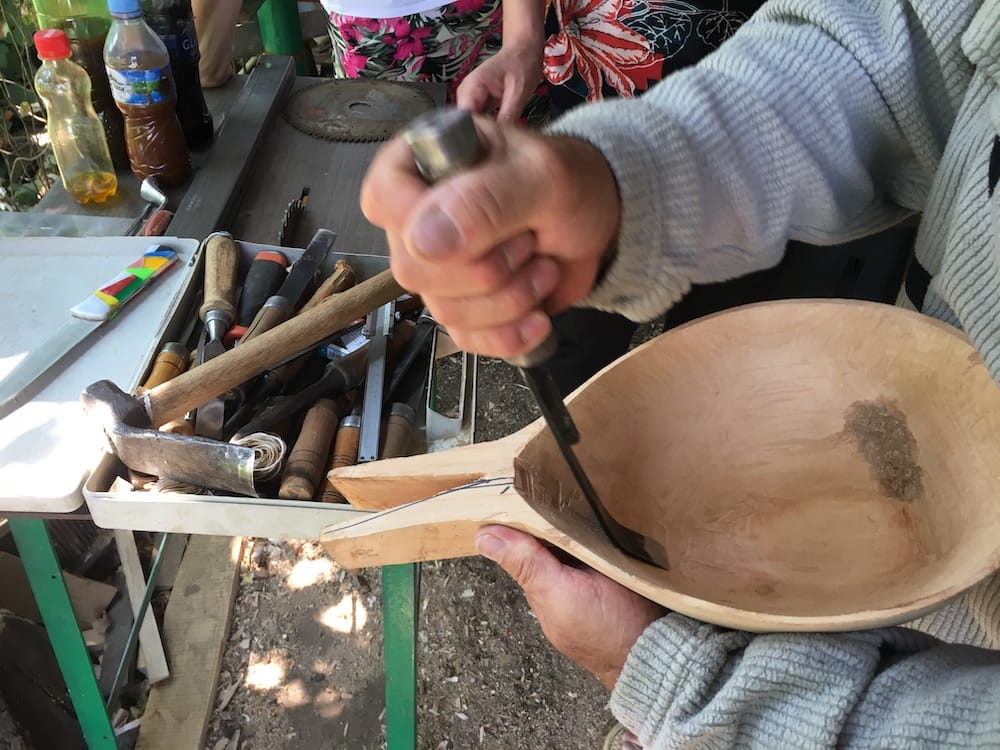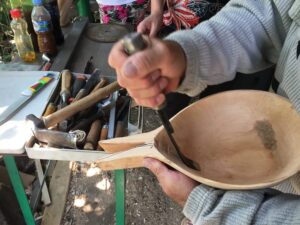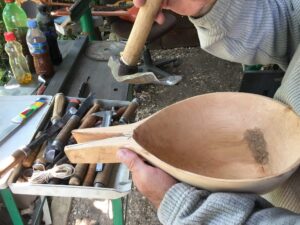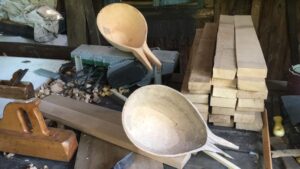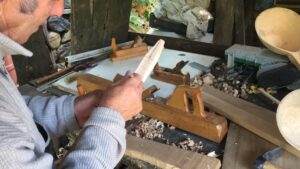Making a handcrafted çifteli and sharki, requires first selecting suitable wood, typically walnut wood or mulberry wood; yet, other types of wood can also be used. The tree should be cut in winter when the leaves have fallen and should be over 40 years old.
The cutting process should be done when the old moon occurs, while the wood is grown under shullani conditions (in sunny areas), and with straight grains. After splitting and cutting the wood, the process continues with its shaping by scraping it out to form the cup-shaped part or head. During this phase, the wood should still have some moisture content. Initially, the scraping out and carving of wood is not applied in full. It must be seasoned for 3 to 4 months before the scraping out and carving process is complete. The next phase is the drying process which lasts for about 8 months.
The instrument varies in length from 60 cm (from the horse to the last fret) to 63 and 66 cm, as preferred by the instrumentalist.
The neck of the çifteli and the sharki is made of seasoned white beech wood. It features a triangular shape with curved edges. The part where it joins the head is wider than at the end where the string pegs are fixed. The frets which are 13 in total, are also installed on the neck/stringboard and are usually made of bronze material. The frets are not equally spaced, but they are installed according to a master pattern, depending on the length of the instrument. While sharki has a larger number of frets which goes over 20, depending on the size of the sharki.
Pegs or keys: produced of palm wood, are wide-headed and conical-shaped. The hole in the neck section where the peg will be fixed is also made in a conical shape.
Horse – is a small item fixed on the head cover, in order to raise the strings up to produce a better sound. The horse can be made of wood or metal.
Two string holders are also produced, one at the lower end of the instrument head (tailpiece) and the other behind the last fret (nut), made of bronze or stainless steel.
The embellishment is performed by painting and pyrography. The substance used for dyeing and painting is called gomallak, which dissolves in alcohol at 960 C. Next, a preferred color is added to this liquid substance and the desired figure is drawn.
In the end, the pyrographic technique is applied.
Distinguishing features of the çifteli and the sharki:
Çifteli is plucked, fretted two-stringed instrument and is smaller than a frame, while sharki is a plucked, fretted three-stringed instrument and is part of a larger family of instruments.

